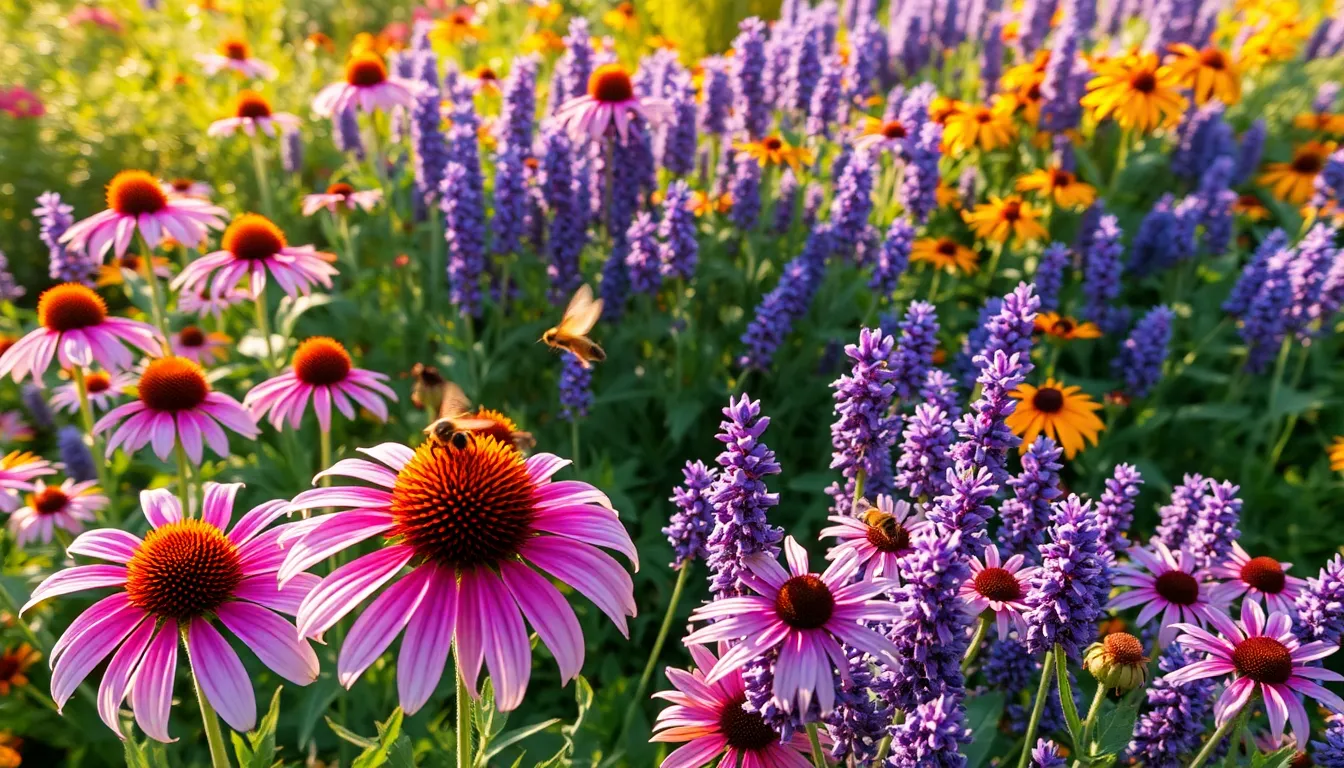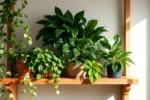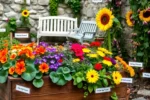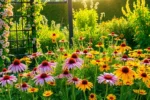Imagine a garden buzzing with life, where the vibrant colors of blooms are matched only by the flutter of butterflies and the hum of bees. Whether you’re just planting your first bed or you have years of dirt under your nails, welcoming pollinators into your garden is one of the most rewarding experiences a gardener can have. Our “Top 10 Perennials That Attract Pollinators” guide is your gateway to creating a thriving, dynamic habitat that doesn’t just look beautiful but also supports the essential work of nature’s tiny helpers.
Selecting the right perennials can transform your garden into a pollinator paradise, providing food and habitat year after year with minimal effort. This list is crafted to help you choose plants that are not only stunning and easy to care for but are also magnets for bees, butterflies, and more. As you explore these top choices, you’ll gain practical tips and insights that empower you to cultivate a garden teeming with life. Get ready to dig in with confidence—these perennials are your ticket to a more vibrant, lively garden space.
Purple Coneflower (Echinacea purpurea – Bee Magnet)
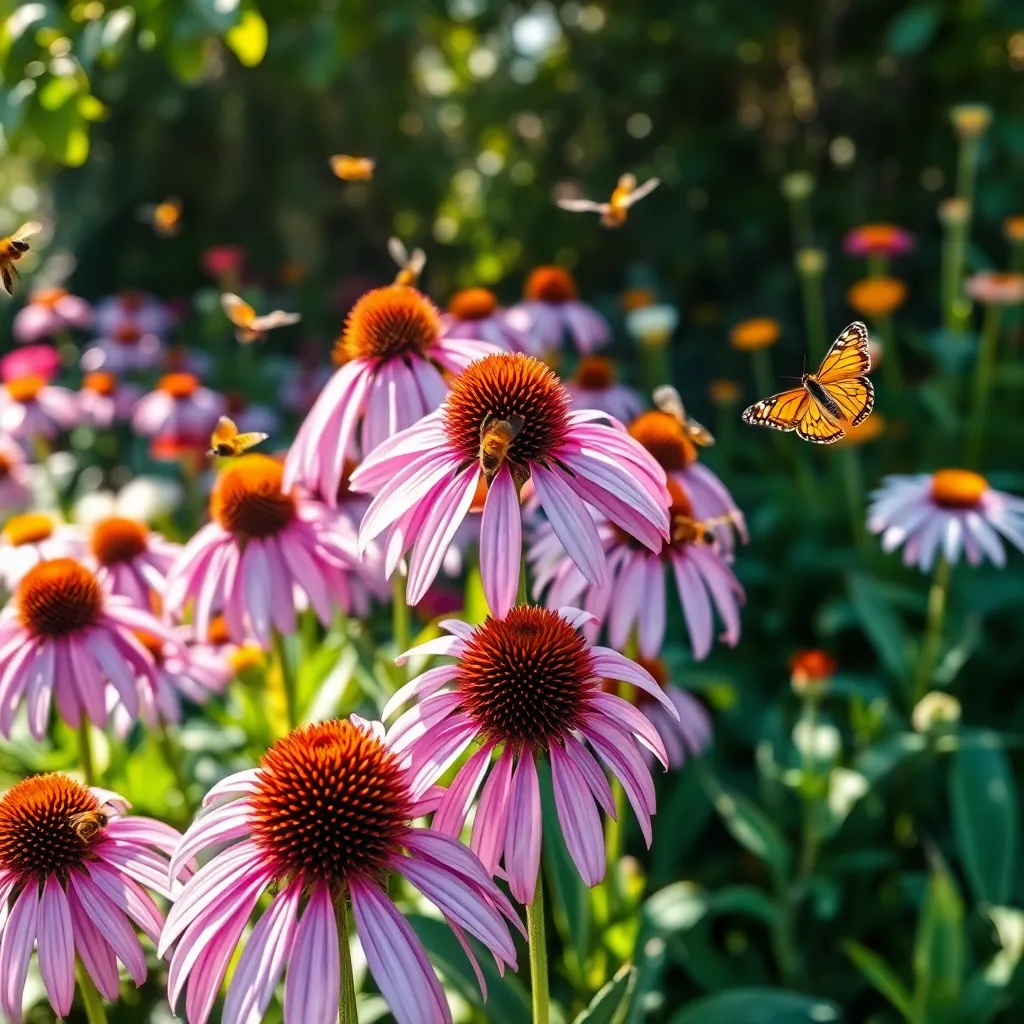
Purple Coneflower, or Echinacea purpurea, is a perennial favorite for attracting pollinators like bees and butterflies. Known for its vibrant purple petals and distinctive cone-shaped centers, this plant is a visual and ecological delight.
To ensure your Purple Coneflowers thrive, plant them in a location with full sun, as they require at least 6-8 hours of sunlight daily. These hardy plants are drought-tolerant once established, making them a low-maintenance option for gardeners looking to attract pollinators.
When preparing your garden bed, choose a well-draining soil; sandy or loamy soils are ideal. If your soil is heavy clay, consider amending it with compost to improve drainage and enhance nutrient availability, providing a better environment for the roots.
Regular deadheading of spent blooms can encourage more flowering and extend the blooming season. For those looking for a more natural approach, allowing some flowers to go to seed can also provide food for birds and contribute to the plant’s self-seeding next season.
Lupine (Lupinus polyphyllus – Vibrant Spikes for Bumblebees)

Lupine (Lupinus polyphyllus) offers vibrant spikes that are a favorite among bumblebees, adding not only beauty but also vital food sources to your garden. With their towering blooms, lupines create a striking visual display that can enhance any perennial border.
To grow lupines successfully, plant them in well-draining, slightly acidic soil and ensure they have full sun to partial shade. These hardy perennials thrive best in USDA zones 4 through 8, making them versatile for many garden settings.
Water lupines moderately, allowing the soil to dry out between waterings to prevent root rot. During their first growing season, pay extra attention to watering to help them establish a robust root system.
For gardening enthusiasts looking to propagate lupines, consider collecting seeds from mature pods and sowing them directly in the garden in the fall. Alternatively, divide established clumps in early spring for a more immediate expansion of your lupine display.
Black-Eyed Susan (Rudbeckia hirta – Long Blooming Season)
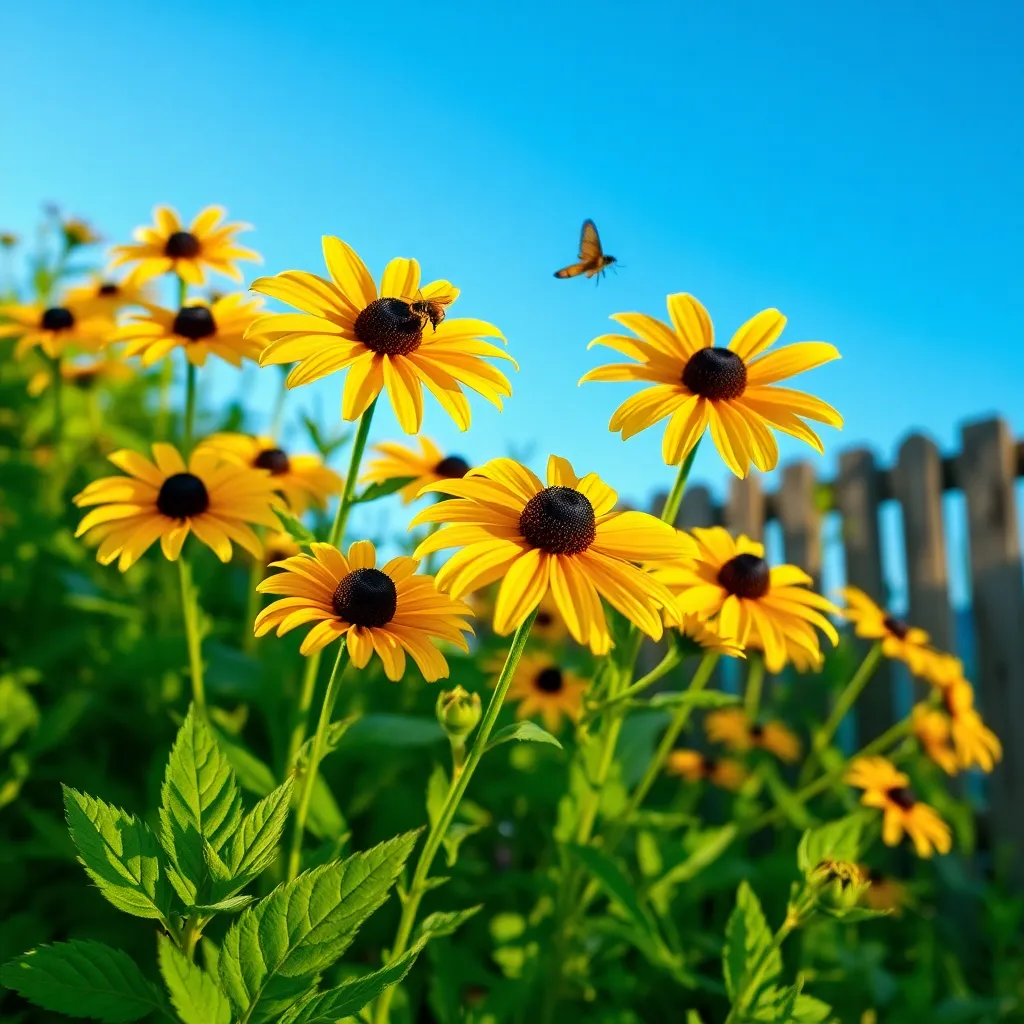
Black-Eyed Susan, or Rudbeckia hirta, is a favorite among gardeners for its vibrant yellow petals and dark centers that last from summer to fall. This hardy perennial is not only visually stunning but also a magnet for pollinators like bees and butterflies, which play a crucial role in your garden’s ecosystem.
To thrive, Black-Eyed Susans require full sun, which means at least six hours of direct sunlight per day. They are quite adaptable to different soil types but perform best in well-drained, moderately fertile soil.
Water these plants deeply but infrequently, aiming to keep the soil consistently moist but not waterlogged. Allowing the top inch of soil to dry out between waterings can help prevent root rot, a common issue if the plants are kept too wet.
For those looking to enhance their garden’s appeal, consider adding a layer of mulch around your Black-Eyed Susans. This will not only help retain soil moisture but also suppress weeds, reducing competition for nutrients.
Advanced gardeners might propagate Black-Eyed Susans through division in early spring or late summer. This process not only helps manage the plant’s size but also encourages vigorous new growth, ensuring a lush display year after year.
Bee Balm (Monarda didyma – Fragrant Hummingbird Haven)
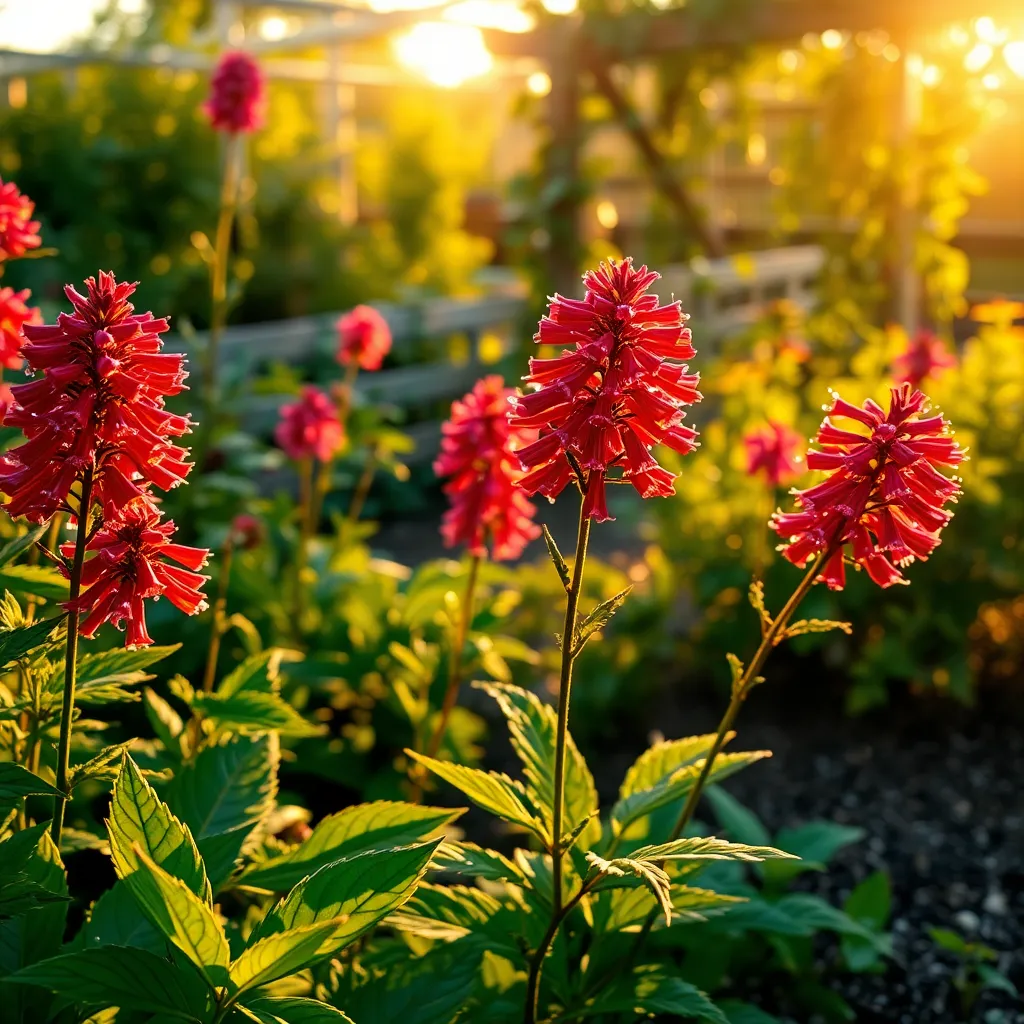
Bee balm, known scientifically as Monarda didyma, is a vibrant perennial that serves as a hummingbird haven in any garden. Its bright and tubular flowers not only attract hummingbirds but also butterflies, bees, and other pollinators, making it an essential addition for those looking to enhance their garden’s biodiversity.
This plant thrives best in full sun to partial shade, ensuring it receives at least six hours of sunlight daily for optimal blooming. When planting bee balm, choose a location with well-draining soil, ideally enriched with organic matter such as compost, to support healthy root development.
Regular watering is crucial during the plant’s initial growth phase, but once established, bee balm becomes fairly drought-tolerant. To maintain plant health and vigor, water deeply but infrequently, allowing the soil to dry out slightly between watering sessions.
For those looking to maximize flowering and reduce disease risk, it is advisable to thin and divide bee balm clumps every few years. This not only encourages more prolific blooming but also prevents overcrowding, which can lead to powdery mildew and other fungal issues.
Lavender (Lavandula angustifolia – Aromatic Butterfly Favorite)
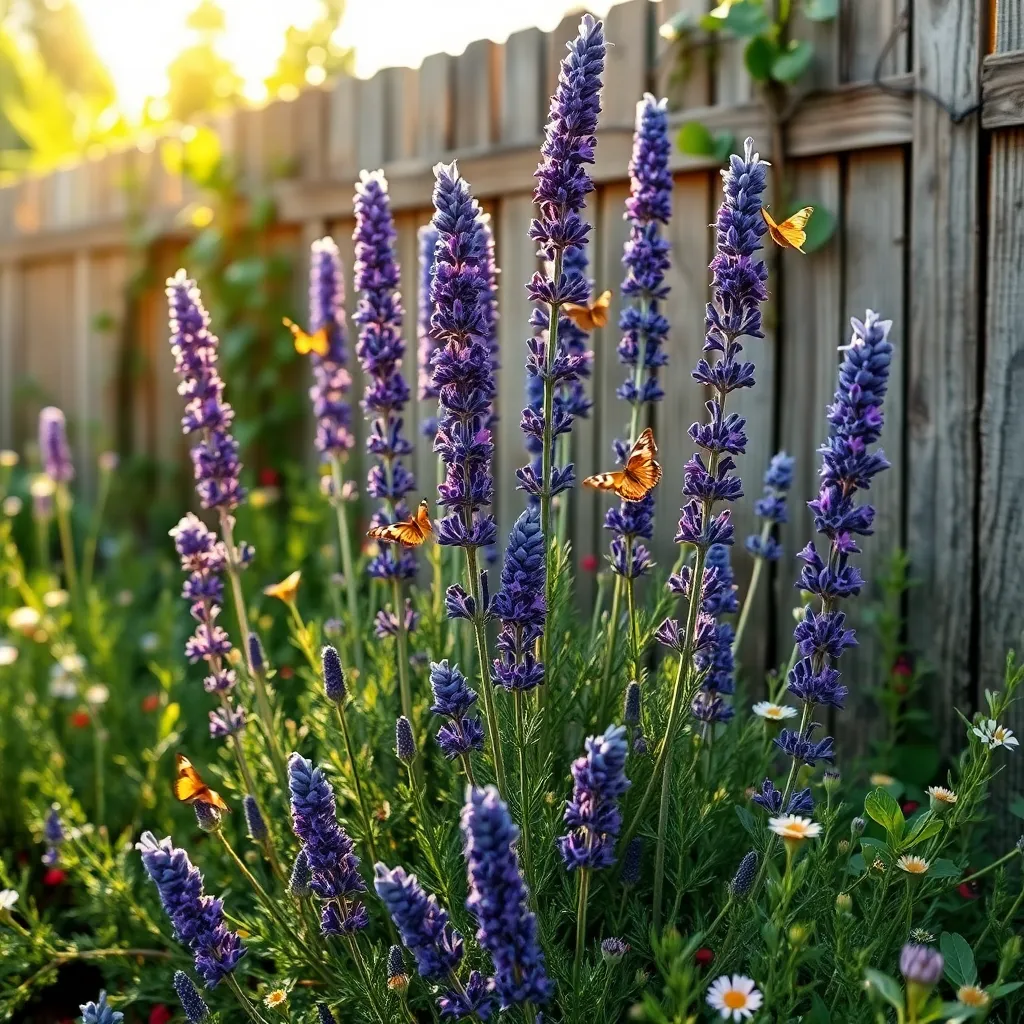
Lavender (Lavandula angustifolia), known for its calming fragrance, is a magnet for butterflies, making it a delightful addition to any garden focused on attracting pollinators. This hardy perennial thrives in well-drained, sandy, or gravelly soil with full sun exposure, ensuring robust growth and vibrant blooms.
To plant lavender successfully, consider spacing the plants about 18 to 24 inches apart to allow for good air circulation, which helps prevent disease. Watering should be done sparingly, as lavender prefers dry conditions; overwatering can lead to root rot, especially in humid climates.
Beginner gardeners will appreciate that lavender is relatively low-maintenance once established. Pruning is essential: cut back the plants in the early spring to encourage bushy growth and remove any deadwood.
For those seeking to maximize lavender’s potential, consider using a mulch of white stones to reflect sunlight and maintain soil warmth. Harvest lavender flowers just as the buds open to capture the most potent fragrance and essential oils, perfect for sachets or homemade products.
Sedum ‘Autumn Joy’ (Sedum spectabile – Late-Season Nectar Source)

Known for its stunning late-season blooms, Sedum ‘Autumn Joy’ (Sedum spectabile) is a fantastic addition to any pollinator-friendly garden. This hardy perennial is particularly attractive to butterflies and bees, providing a crucial nectar source when many other flowers have faded.
To thrive, plant Sedum ‘Autumn Joy’ in well-drained soil, where it can bask in full sunlight. Water sparingly, as this drought-tolerant plant prefers dry conditions, making it perfect for low-maintenance gardeners.
Beginner gardeners will appreciate its resilience, as it requires minimal intervention once established. For those looking to refine their skills, consider dividing the clumps every few years to promote vigorous growth and prevent overcrowding.
Mulching around the base can help retain moisture and suppress weeds, though it’s important not to cover the stems. Incorporate organic matter into the soil annually to support healthy growth and vibrant blooms.
Salvia ‘May Night’ (Salvia nemorosa – Deep Blue Blooms for Pollinators)
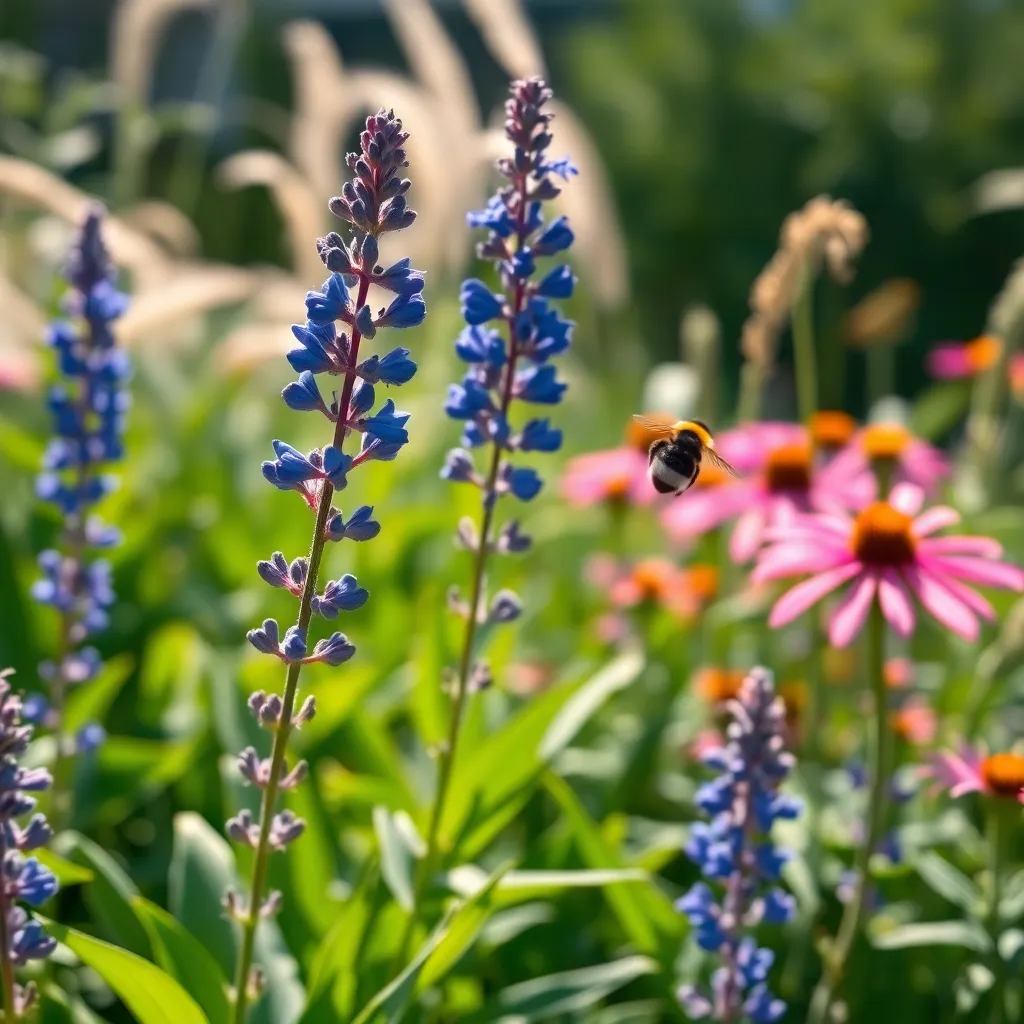
Continuing from the vibrant late-season blooms of Sedum ‘Autumn Joy’, Salvia ‘May Night’ offers a stunning burst of deep blue flowers that captivates both gardeners and pollinators alike. Known for its long blooming period from late spring to early fall, this hardy perennial is a magnet for bees, butterflies, and hummingbirds.
To get the most out of Salvia ‘May Night’, plant it in a location that receives full sun for at least six hours a day. It thrives in well-drained soil, and adding a layer of mulch can help retain moisture while keeping the weeds at bay.
Regular deadheading encourages continuous blooming and prevents the plant from self-seeding excessively. For beginners, this involves simply snipping off spent flowers, which also keeps the plant looking tidy and vibrant.
Experienced gardeners may appreciate that Salvia ‘May Night’ is drought-tolerant once established, making it a low-maintenance choice for water-wise gardens. However, during prolonged dry spells, a deep watering every 7-10 days will keep the plant healthy and blooming profusely.
Coreopsis ‘Moonbeam’ (Coreopsis verticillata – Continuous Bloomer)
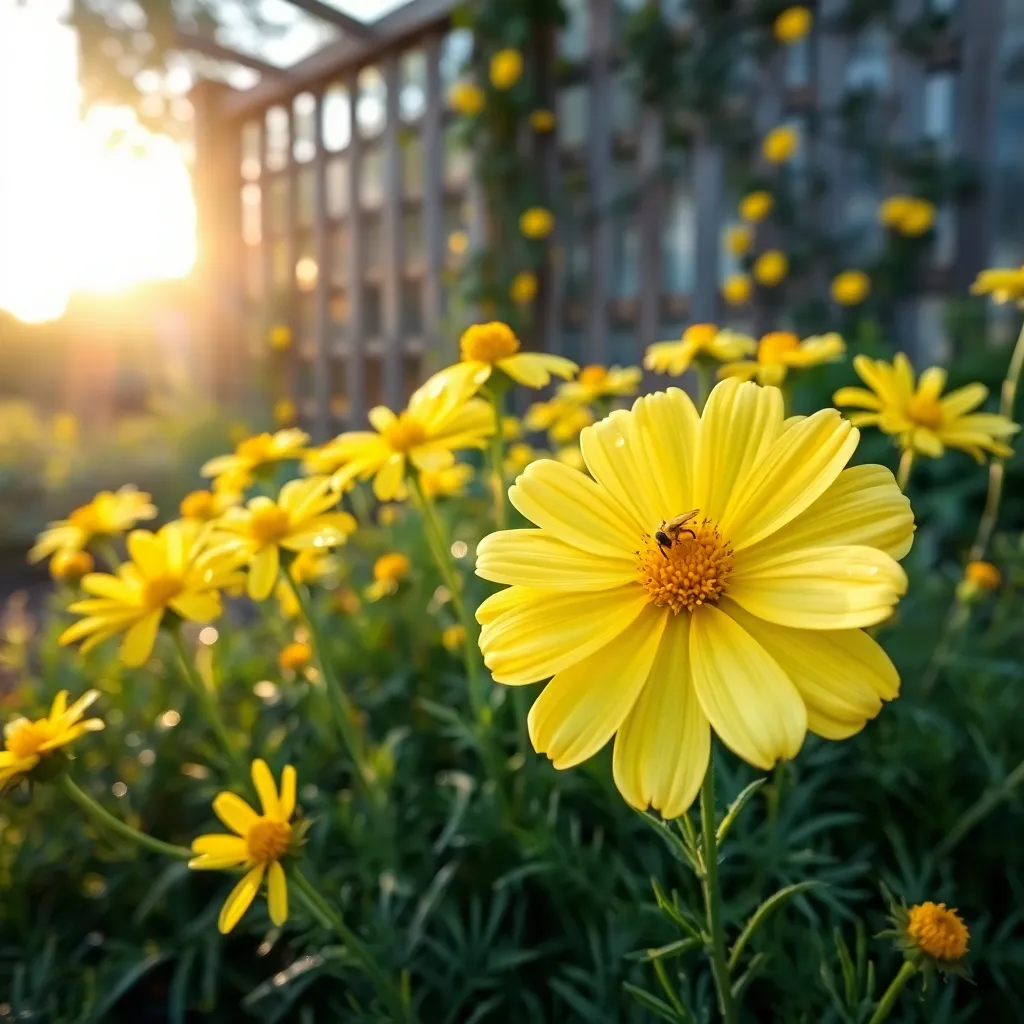
Coreopsis ‘Moonbeam’ is a delightful perennial that thrives in gardens, offering continuous blooms that are a magnet for pollinators. This plant is perfect for both beginners and experienced gardeners as it requires minimal care while delivering maximum impact.
To grow Coreopsis ‘Moonbeam’ successfully, ensure it is planted in well-draining soil, which prevents root rot and other moisture-related issues. It performs best in full sun, where it can receive at least six hours of direct sunlight daily, promoting abundant flowering.
Regular deadheading of spent blooms encourages the plant to produce more flowers throughout the growing season. While this may seem tedious, it is a simple task that significantly prolongs the blooming period, ensuring a steady supply of nectar for pollinators.
Water Coreopsis ‘Moonbeam’ moderately, allowing the soil to dry out between waterings to mimic its native environment. In regions with high humidity, spacing plants adequately ensures good air circulation, reducing the risk of fungal diseases.
Russian Sage (Perovskia atriplicifolia – Airy, Aromatic Attractor)
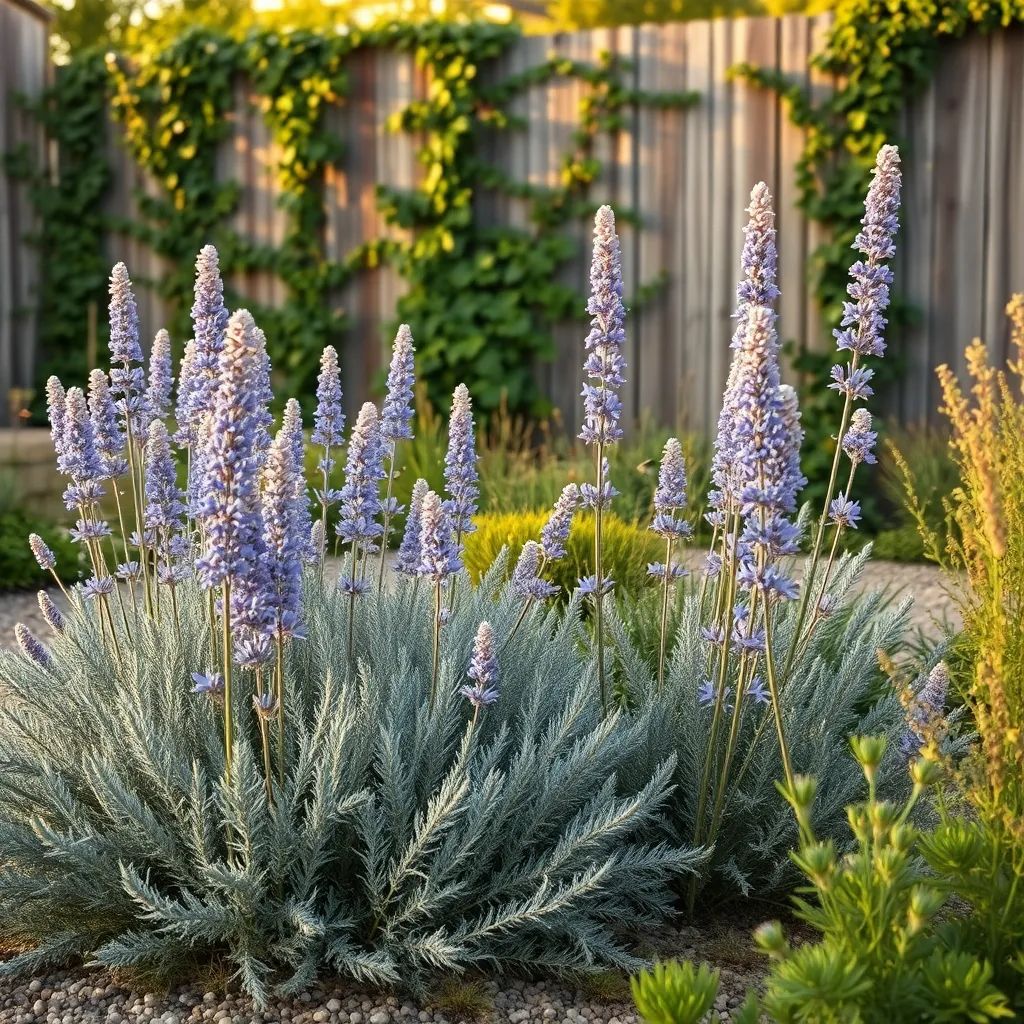
Russian Sage, or Perovskia atriplicifolia, is a versatile perennial known for its airy, aromatic presence. This plant is not only a visual delight but also a magnet for pollinators, making it an excellent choice for any garden looking to boost biodiversity.
To cultivate Russian Sage successfully, plant it in a location that receives full sun, as it thrives in bright light. Ensure the soil is well-draining and lean, since overly rich soil can lead to leggy growth that may require staking.
Watering should be infrequent but thorough; allow the soil to dry out between watering sessions to mimic its native arid conditions. During the first growing season, focus on establishing a strong root system by watering more frequently.
For those with more gardening experience, consider pruning Russian Sage in late winter or early spring to about 12 inches above the ground. This encourages bushier growth and more robust flowering, enhancing its attractiveness to bees and butterflies.
Yarrow (Achillea millefolium – Hardy, Drought-Resistant Choice)
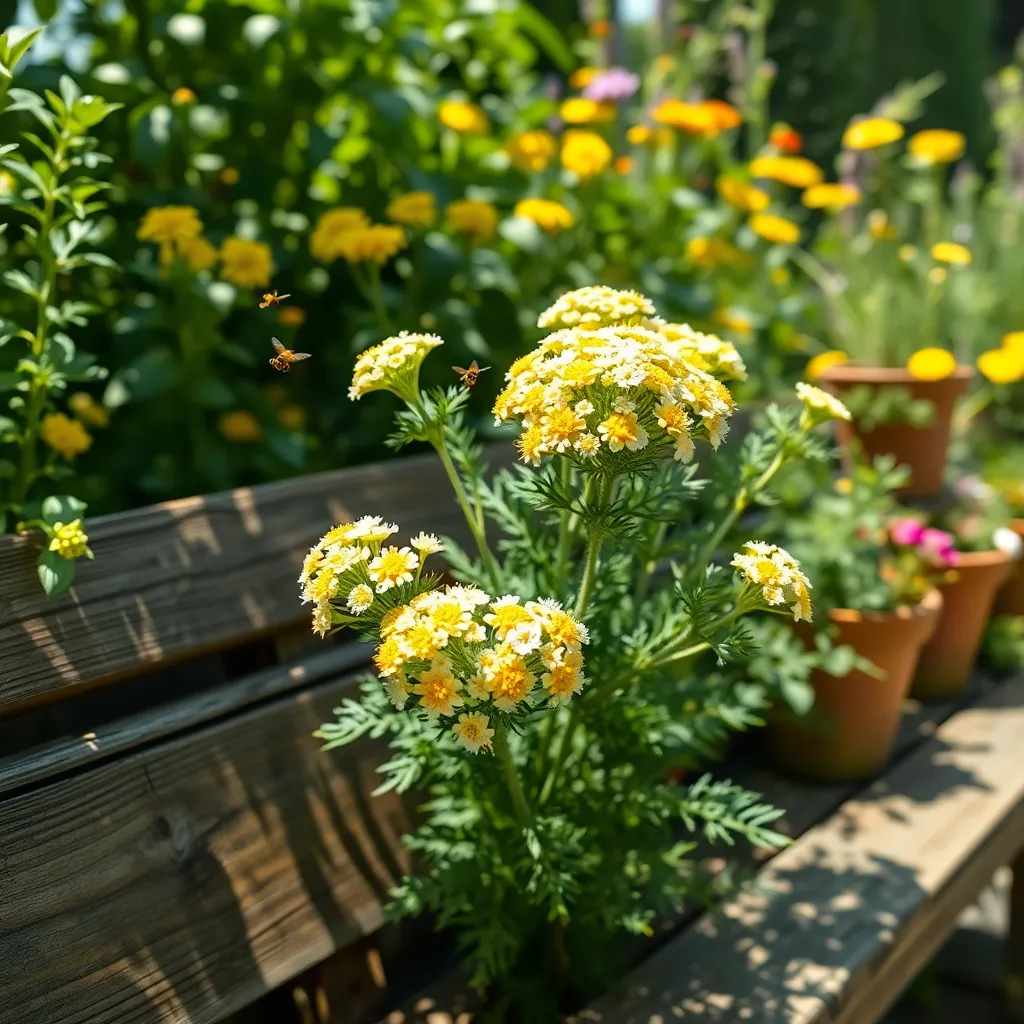
Yarrow (Achillea millefolium) is a fantastic choice for gardeners looking to attract pollinators with minimal effort. This hardy perennial is known for its drought resistance, making it an ideal option for areas with limited rainfall or for gardeners who want a low-maintenance plant.
To successfully grow yarrow, choose a spot that receives full sun, as this plant thrives in bright conditions. It prefers well-drained soil, and while it tolerates poor soil quality, adding some compost can enhance its growth and bloom quality.
Water yarrow sparingly; once established, it requires only occasional watering, especially during prolonged dry spells. Overwatering can lead to root rot, so ensure the soil dries out between waterings to keep the plant healthy.
For gardeners with a bit more experience, consider deadheading the spent blooms to encourage a longer flowering season. Additionally, dividing yarrow every few years in the spring can help rejuvenate the plant and prevent it from becoming overcrowded, ensuring it remains a vital part of your pollinator-friendly garden.
Conclusion: Growing Success with These Plants
In exploring the ‘Top 10 Perennials That Attract Pollinators,’ we’ve delved into key relationship concepts that mirror the principles of nurturing bonds. From understanding the importance of choosing the right environment, akin to selecting the perfect perennial such as Lavender or Coneflower, to recognizing the value of patience and consistent care seen in plants like Bee Balm and Black-eyed Susan, these insights prove invaluable. We’ve also touched on diversity and adaptability with plants like Milkweed and Yarrow, illustrating how embracing differences and adjusting to change strengthens connections.
As a next step, consider planting one of these perennials in your garden or community space, symbolizing your commitment to fostering relationships. By engaging with nature, you cultivate a deeper understanding of growth and resilience in your personal connections.
Remember to bookmark this article to revisit these concepts whenever you need a reminder of how nature’s wisdom can enhance your relationships. As you look forward, envision a garden of thriving connections, blossoming through thoughtful care and attention. Let this journey empower you to nurture relationships that are as enduring and beautiful as the most vibrant perennials. Together, we can cultivate a future filled with meaningful and lasting bonds.

